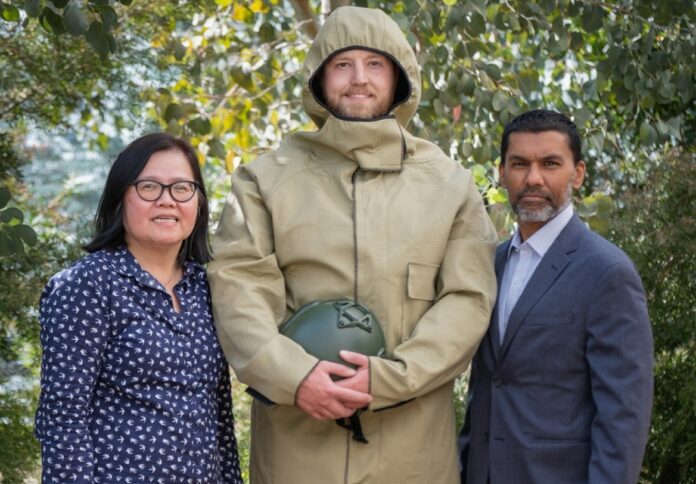
Australia’s national science agency, CSIRO, has developed a cutting-edge prototype uniform designed to protect Australian troops from chemical and biological threats.
Utilising advanced nanofibre technology, the uniform is both lightweight and effective in filtering out harmful particles while maintaining breathability and comfort in extreme conditions, the agency said in a news release.
Dr Marcus Zipper, director of CSIRO’s Manufacturing Research Unit, stated that this textile innovation emerged from a collaborative effort with industry and research partners, including DMTC.
“Our nanofibre technology, pioneered by CSIRO scientists, has the potential to significantly improve the level of protection soldiers’ uniforms provide and can also be used for non-military applications, including protecting emergency responders and hazmat crews.”
In particular, the project was funded by the Department of Defence and coordinated by DMTC Limited. Bruck Textiles, Defence Science and Technology Group, and RMIT University also played key roles in supporting the initiative.
Deepak Ganga, head of Program Management at DMTC, emphasised the importance of collaboration in achieving this breakthrough.
“This project demonstrates the power of collaboration. CSIRO’s scientific excellence in nanofibre research has been matched with the expertise of our partners in textiles, defence science, and manufacturing,” Ganga stated.
“This has resulted in a groundbreaking solution that offers benefits for Australian troops, for the first responder community, and potentially for Australia’s alliance partners.”
Meanwhile, at the core of this innovation is the uniform’s ability to provide superior protection while enhancing comfort and mobility in harsh environments. The prototype’s lightweight construction and breathable fabric offer key advantages in the field.
“We harnessed the unique properties of nanofibres to create a lightweight fabric that effectively filters out harmful particles while remaining highly breathable,” explained Dr Yen Truong, CSIRO’s project lead.
“In rigorous testing, the prototype surpassed all performance targets for air filtration, air permeability, thermal comfort, and chemical protection.”
Dr Truong added, “This means it effectively filters pollutants from the air, allows for breathability, maintains comfortable temperatures even in extreme conditions, and offers superior protection from hazardous chemicals.”
With the support of DMTC Limited, Dr Truong and the research team are seeking further funding to progress the project into its next phase, which will involve field testing with Australian Defence Force personnel and refining manufacturing processes for large-scale production.



















